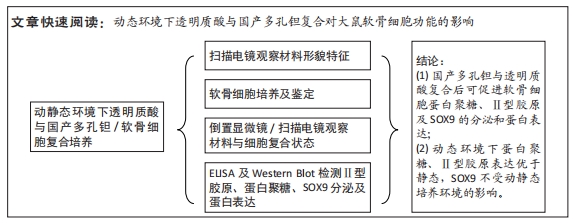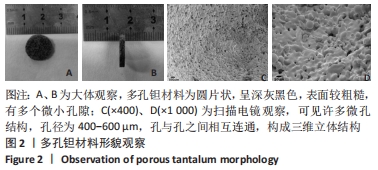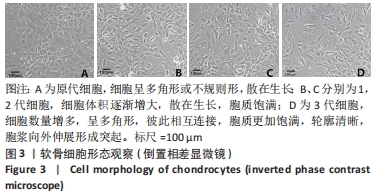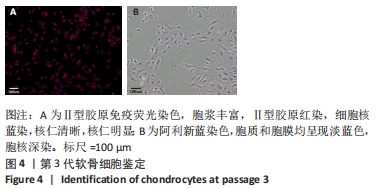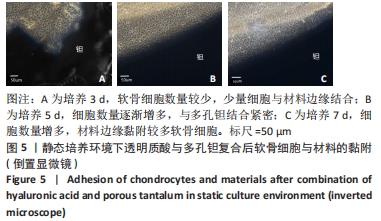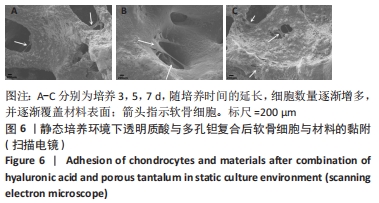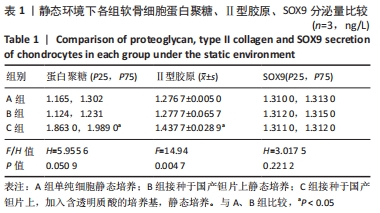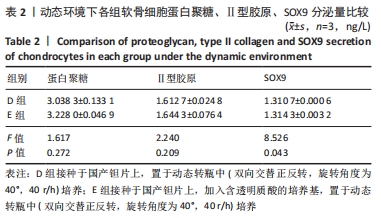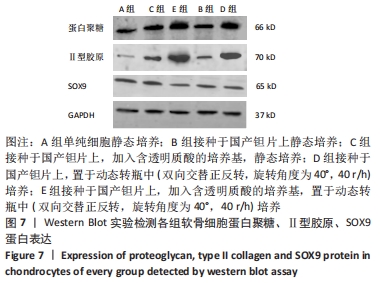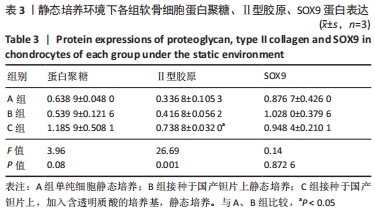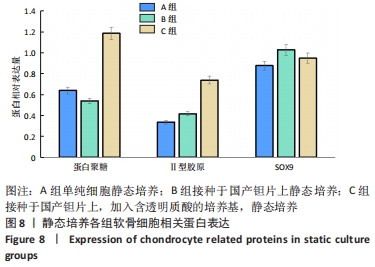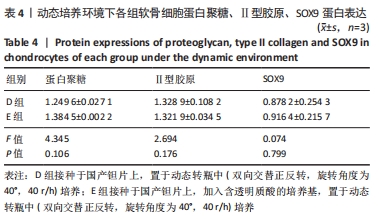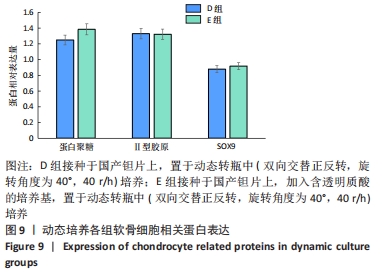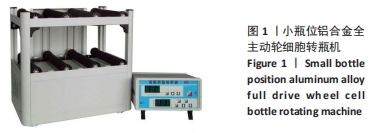[1] HUBBARD MJ. Articular debridement versus washout for degeneration of the medial femoral condyle. A five-year study. Bone Joint Surg Br. 1996;78(2):217-219.
[2] JACKSON RW, DIETERICHS C. The results of arthroscopic lavage and debridement of osteoarthritic knees based on the severity of degeneration: a 4- to 6-year symptomatic follow-up. Arthroscopy. 2003;19(1):13-20.
[3] PAP T, KORB-PAP A. Cartilage damage in osteoarthritis and rheumatoid arthritis-two unequal siblings. Nat Rev Rheumatol. 2015;11(10): 606-615.
[4] CHIANG H, KUO TF, TSAI CC, et al. Repair of porcine articular cartilage defect with autologous chondrocyte transplantation. J Orthop Res. 2005;23(3):584-593.
[5] JAMIL K, CHUA KH, JOUDI S, et al. Development of a cartilage composite utilizing porous tantalum, fibrin, and rabbit chondrocytes for treatment of cartilage defect. J Orthop Surg Res. 2015;7(10):27.
[6] YAZDIMAMAGHANI M, RAZAVI M, VASHAEE D, et al. Porous magnesium-based scaffolds for tissue engineering. Mater Sci Eng C Mater Biol Appl. 2017;1(71):1253-1266.
[7] LIU Y, SU X, ZHOU S, et al. A modified porous tantalum implant technique for osteonecrosis of the femoral head: survivorship analysis and prognostic factors for radiographic progression and conversion to total hip arthroplasty. Int J Clin Exp Med. 2015;8(2):1918-1930.
[8] KHAN FA, ROSE PS, YANAGISAWA M, et al. Surgical Technique: Porous Tantalum Reconstruction for Destructive Nonprimary Periacetabular Tumors. Clin Orthop Relat Res. 2012;470(2):594-601.
[9] PATIL N, LEE K, GOODMAN SB. Porous Tantalum in Hip and Knee Reconstructive Surgery. J Biomed Mater Res B Appl Biomater. 2009; 89(1):242-251.
[10] SALWOWSKA NM, BEBENEK KA, ŻĄDŁO DA, et al. Physiochemical properties and application of hyaluronic acid: a systematic review. J Cosmet Dermatol. 2016;15(4):520-526.
[11] OZKAN FU, OZKAN K, RAMADAN S, et al. Chondroprotective effect of N-acetylglucosamine and hyaluronate in early stages of osteoarthritis-an experimental study in rabbits. Bull NYU Hosp Jt Dis. 2009;67(3):352-357.
[12] MUJEEB A, MILLER AF, SAIANI A, et al. Self-assembled octapeptide scaffolds for in vitro chondrocyte culture. Acta Biomater. 2013;9(1): 4609-4617.
[13] ALAVI A, STUPACK DG. Cell survival in a three-dimensional matrix. Methods Enzymol. 2007;426:85-101.
[14] 郑欣欣,曹贵方.浅谈动物细胞体外三维培养技术[J].内蒙古科技与经济,2015(19):89-90.
[15] 张振,罗辉宇,曾炼.大鼠软骨细胞与兔软骨细胞的培养与比较[J].骨科,2020,11(4):323-328.
[16] 张辉,王少华,王茜,等. RGD多肽修饰多孔钽可激活MG63细胞整合素/黏着斑激酶信号通路[J].中国组织工程研究,2021,25(16): 2535-2540.
[17] 崔逸爽,赖振权,胡中岭,等. 骨形态发生蛋白7复合国产多孔钽对骨髓间充质干细胞向软骨分化及功能的影响[J].中国组织工程研究,2020,24(16):2478-2484.
[18] SUN X, YIN H, WANG Y, et al.In Situ Articular Cartilage Regeneration through Endogenous Reparative Cell Homing using a Functional Bone Marrow-specific Scaffolding System. ACS Appl Mater Interfaces. 2018;10(45):38715-38728.
[19] 吴昊,李朝旭.关节软骨损伤修复的治疗进展[J].世界最新医学信息文摘,2019,19(93):75-77.
[20] 尤奇,段小军,杨柳,等.临床应用软骨组织工程技术修复关节软骨缺损的进展[J].实用骨科杂志,2018,24(1):52-55.
[21] DI LUCA A, LONGONI A, CRISCENTI G, et al.Surface energy and stiffness discrete gradients in additive manufactured scaffolds for osteochondral regeneration. Biofabrication. 2016;8(1):015014.
[22] YU X, QIAN G, CHEN S, et al. A tracheal scaffold of gelatin-chondroitin sulfate-hyaluronan-polyvinyl alcohol with orientated porous structure. Carbohydr Polym. 2017;159:20-28.
[23] 张辉,李亮,王茜,等.骨形成蛋白-7对多孔钽/软骨细胞复合物分泌功能以及Col-Ⅱ, AGG和Sox9基因表达的影响[J].北京大学学报(医学版),2015,47(2):219-225.
[24] WANG Q, ZHANG H, LI Q, et al. Biocompatibility and osteogenic properties of porous tantalum. Exp Ther Med. 2015;9(3):780-786.
[25] MARDONES RM, REINHOLZ GG, FITZSIMMONS JS, et al. Development of a biologic prosthetic composite for cartilage repair. Tissue Eng. 2005; 11(9-10):1368-1378.
[26] HEMSHEKHAR M, THUSHARA RM, CHANDRANAYAKA S, et al. Emerging roles of hyaluronic acid bioscaffolds in tissue engineering and regenerative medicine. Int J Biol Macromol. 2016;86:917-928.
[27] ORYAN A, KAMALI A, MOSHIRI A, et al. Chemical crosslinking of biopolymeric scaffolds: Current knowledge and future directions of crosslinked engineered bone scaffolds. Int J Biol Macromol. 2018;107: 678-688.
[28] JUHÁSZ ML, MARMUR ES. Temporal fossa defects: techniques for injecting hyaluronic acid filler and complications after hyaluronic acid filler injection. J Cosmet Dermatol. 2015;14(3):254-259.
[29] SILVA CR, BABO PS, GULINO M, et al. Injectable and tunable hyaluronic acid hydrogels releasing chemotactic and angiogenic growth factors for endodontic regeneration. Acta Biomater. 2018;77:155-171.
[30] MARTÍNEZ-SANZ E, OSSIPOV DA, HILBORN J, et al. Bone reservoir: Injectable hyaluronic acid hydrogel for minimal invasive bone augmentation. J Control Release. 2011;152(2):232-240.
[31] 沈雁,唐毅,李斯明,等.碱性成纤维细胞生长因子与透明质酸对培养兔软骨细胞的作用[J].中华创伤杂志,2000,16(6):337-339.
[32] 黄建荣,李卫平,沈慧勇.胰岛素样生长因子I与透明质酸对人关节软骨细胞的作用[J].中华生物医学工程杂志,2008,14(3):180-184.
[33] 拉希德,刘世清.透明质酸对体外培养大鼠退变关节软骨细胞的影响[J].武汉大学学报(医学版),2007,28(2):177-180.
[34] 杜国辉,屈爱存,陈建英,等.透明质酸对关节软骨蛋白聚糖aggrecan的影响[J].中国生化药物杂志,2011(2):45-47.
[35] 高宗强,郭雄,陈君长,等.透明质酸对体外培养大骨节病软骨细胞Ⅱ型胶原和聚集蛋白聚糖mRNA表达的影响[J].中国组织工程研究,2009,13(46):9061-9065.
[36] MUJEEB A, MILLER AF, SAIANI A, et al. Self-assembled octapeptide scaffolds for in vitro chondrocyte culture. Acta Biomater. 2013;9(1): 4609-4617.
[37] 曲鹏玮,亓建洪,韩运宁,等.力学刺激对体外保存软骨活力影响的实验研究[J].中国医药生物技术,2018,13(3):243-248.
[38] FITZGERALD JB, JIN M, DEAN D, et al. Mechanical Compression of Cartilage Explants Induces Multiple Time-dependent Gene Expression Patterns and Involves Intracellular Calcium and Cyclic AMP. J Biol Chem. 2004;279(19):19502-19511.
[39] SHIEH AC, ATHANASIOU KA. Dynamic compression of single cells. Osteoarthritis Cartilage. 2007;15(3):328-334.
[40] WALDMAN SD, SPITERI CG, GRYNPAS MD, et al. Effect of Biomechanical Conditioning on Cartilaginous Tissue Formation in Vitr. J Bone Joint Surg Am. 2003;2(1):101-105.
[41] CHEN C, TAMBE DT, DENG L, et al. Biomechanical properties and mechanobiology of the articular chondrocyte. Am J Physiol Cell Physiol. 2013;305(12):C1202-C1208.
[42] TOYODA T, SEEDHOM BB, KIRKHAM J, et al. Upregulation of aggrecan and type II collagen mRNA expression in bovine chondrocytes by the application of hydrostatic pressure. Biorheology. 2003;40:79-85.
[43] JEON JE, SCHROBBACK K, HUTMACHER DW, et al. Dynamic compression improves biosynthesis of human zonal chondrocytes from osteoarthritis patients. Osteoarthritis Cartilage. 2012;20(8):906-915.
|
